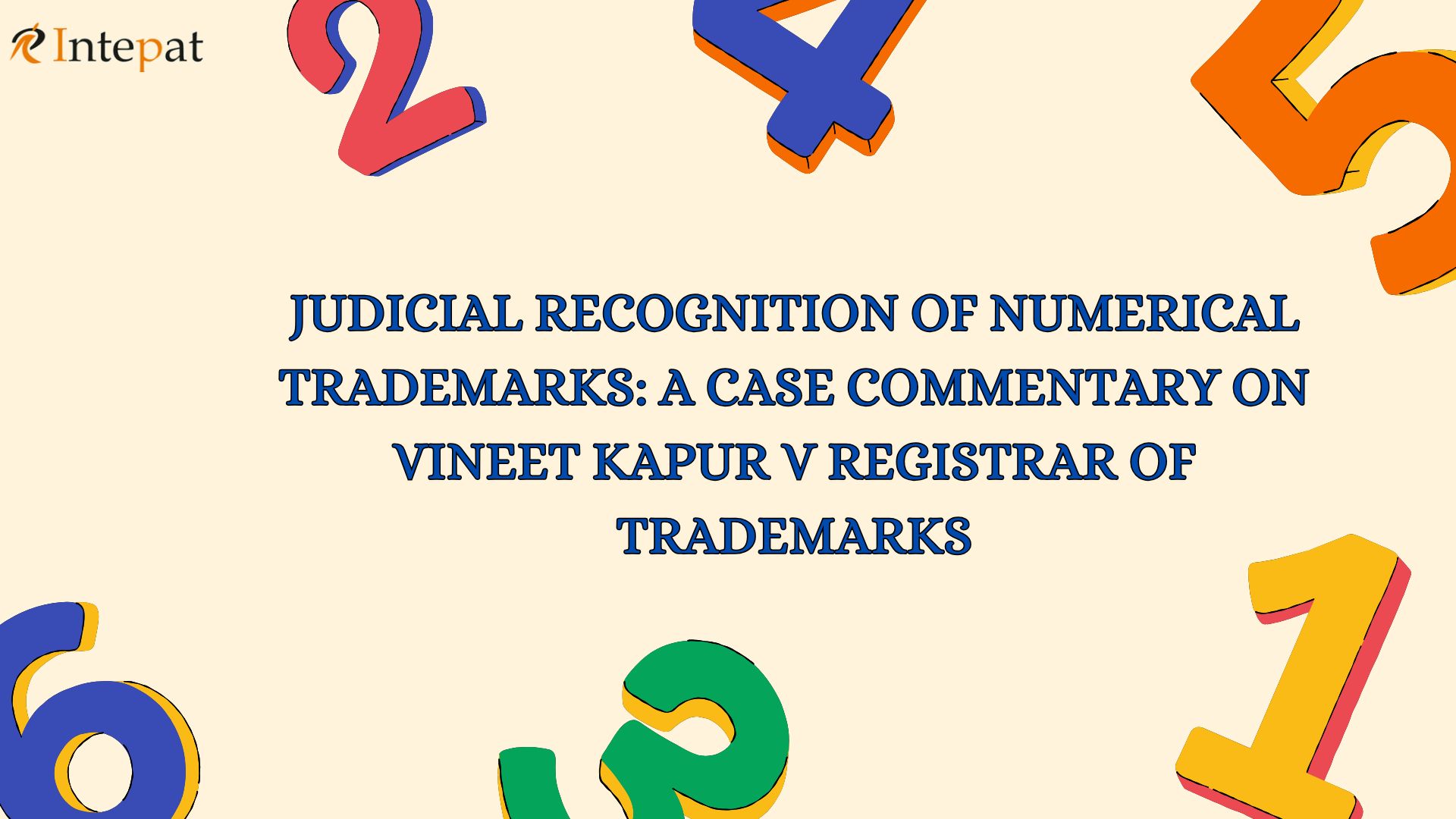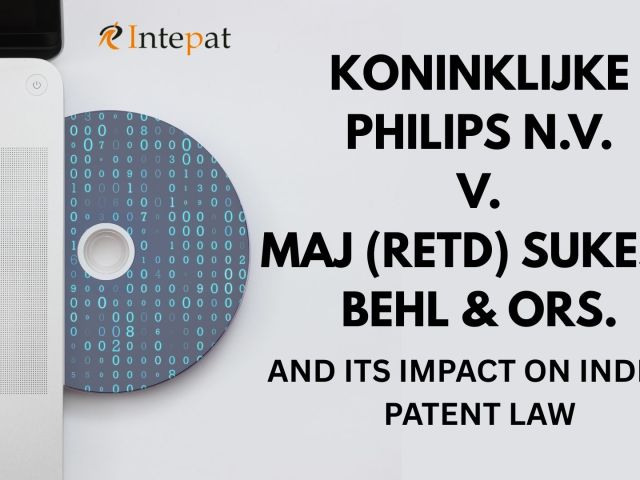The world of trademarks is a fascinating intersection of law, branding, and consumer perception. While logos, brand names, and taglines often come to mind when we think of trademarks, numerical marks also play a significant role in distinguishing goods and services in the marketplace. However, the registrability of purely numerical marks has often been a subject of debate and scrutiny by trademark authorities worldwide.
Recently, the Delhi High Court, in the case of Vineet Kapur v. Registrar of Trade Marks (C.A. (COMM.IPD-TM) 22/2024, decided on April 25, 2025), delivered a noteworthy judgment that sheds light on the registrability of numerical marks, particularly those deemed “inherently distinctive.” This article delves into the facts of the case, the reasoning of the court, and the broader implications of this decision for trademark law and practice in India.
Background of the Case
The appellant, Vineet Kapur, filed a trademark application (No. 5151862) on September 28, 2021, seeking registration of the numerical mark ‘2929’ under Class 3 for cosmetics, skincare products, soaps, shampoos, and related items. However, the Registrar of Trade Marks rejected the application in February 2024, arguing that the mark:
- Consisted solely of common numbers,
- Lacked any distinctive character or creativity,
- Was not entitled to protection under Section 9 of the Trade Marks Act, 1999.
Aggrieved by this decision, Mr. Kapur filed an appeal before the Delhi High Court under Section 91 of the Trade Marks Act, 1999, and Rule 156 of the Trade Marks Rules, 2017.
Court’s Analysis and Rationale
Justice Mini Pushkarna delivered a detailed judgment that addressed each of the Registrar’s concerns.
First and foremost, the Court reaffirmed that under Section 2(1)(m) of the Trade Marks Act, the term “mark” includes numerals and their combinations. The mere fact that a mark consists of numbers does not, in itself, make it unregistrable.
Second, the Court held that distinctiveness must be assessed in relation to the goods and the relevant public. “2929” has no direct association with cosmetics or personal care products, nor is it a commonly used industry term. This arbitrariness makes it inherently distinctive.
The Court cited multiple Indian precedents where numerical marks were granted protection:
- “501” for soap
- “345” for bidis
- “91” for bicycles
- “1001” for paints
- “555” for incense sticks, among others.
Additionally, international jurisprudence supported this view. The Court referenced McCarthy on Trademarks and Unfair Competition, which notes that numerical combinations have long been accepted as valid trademarks when used to distinguish goods and build consumer association.
Key Takeaways from the Judgment:
The judgment offers several important insights into the registrability of numerical marks in India:
- Reaffirmation of Inherent Distinctiveness: The judgment reaffirms the principle that a mark can be registered if it is inherently distinctive, meaning it is capable of distinguishing the goods or services of one undertaking from those of other undertakings without needing to acquire distinctiveness through use (secondary meaning).
- Contextual Assessment: The Court’s decision highlights the importance of assessing the distinctiveness of a mark in the specific context of the goods or services for which it is sought to be registered. A numerical mark that might be considered non-distinctive for certain goods (e.g., a model number for electronic devices) could be inherently distinctive for entirely unrelated goods like cosmetics.
- Arbitrary and Unique Marks: The Court found ‘2929’ to be a unique and arbitrary mark in relation to cosmetics, nail polish, soaps, and shampoos. This suggests that when a numerical mark bears no logical or descriptive connection to the goods or services, and is not commonly used in the relevant trade, it is more likely to be considered inherently distinctive.
- ‘Proposed to be Used’ Basis: The fact that the mark was applied for on a ‘proposed to be used’ basis did not preclude the Court from finding it inherently distinctive. This indicates that inherent distinctiveness can be established even before the mark is actually used in commerce.
- No Exclusive Right Over Individual Numerals: While allowing the registration of ‘2929’, the Court imposed a condition that the appellant shall not claim any exclusive right over the individual numerals ‘2’ and ‘9’. This is a common practice in trademark law to prevent monopolization of basic descriptive or non-distinctive elements within a composite mark.
- Non-Binding on Opposition Proceedings: The Court explicitly clarified that its order would not bind any opposition proceedings that might be instituted by third parties. This underscores that while the Court found the mark inherently distinctive at the examination stage, potential objectors might still raise valid concerns based on other grounds.
Implications for Trademark Law and Practice:
The Vineet Kapur judgment provides valuable guidance for businesses seeking to register numerical marks in India. It clarifies that purely numerical marks are not per se unregistrable. The key lies in demonstrating that the specific numerical combination is arbitrary and has no direct or commonly understood association with the goods or services in question.
This decision encourages a more nuanced approach to the examination of numerical marks, moving away from a potentially blanket rejection based solely on their numerical nature. Trademark applicants should focus on articulating why their chosen numerical mark is unique and non-descriptive in the relevant industry. Evidence of the absence of similar marks in the market can be crucial in establishing inherent distinctiveness.
However, businesses should also be mindful of the condition imposed by the Court regarding the non-exclusivity of individual numerals. When devising numerical marks, it might be prudent to consider combinations that are sufficiently unique as a whole to overcome potential objections and limitations on exclusive rights.
Furthermore, the judgment serves as a reminder that even if a mark is deemed inherently distinctive at the examination stage, it may still face challenges during opposition proceedings. Therefore, thorough due diligence, including comprehensive trademark searches, remains essential before adopting and seeking to register any mark, including numerical ones.
CONCLUSION
The Delhi High Court’s decision in Vineet Kapur vs Registrar of Trade Marks is a forward-looking interpretation of trademark law that aligns with both Indian precedents and international norms. It validates the idea that creativity in branding can emerge from even the simplest elements—like a sequence of digits—so long as they serve the essential function of distinguishing goods or services in the marketplace.
In an age where brand recognition often hinges on memorability, simplicity, and digital visibility, number-based trademarks offer powerful advantages. This case confirms that Indian law not only permits but protects such innovations, provided they are genuinely distinctive and used appropriately.
Written by Medha, Legal Intern at Intepat IP




